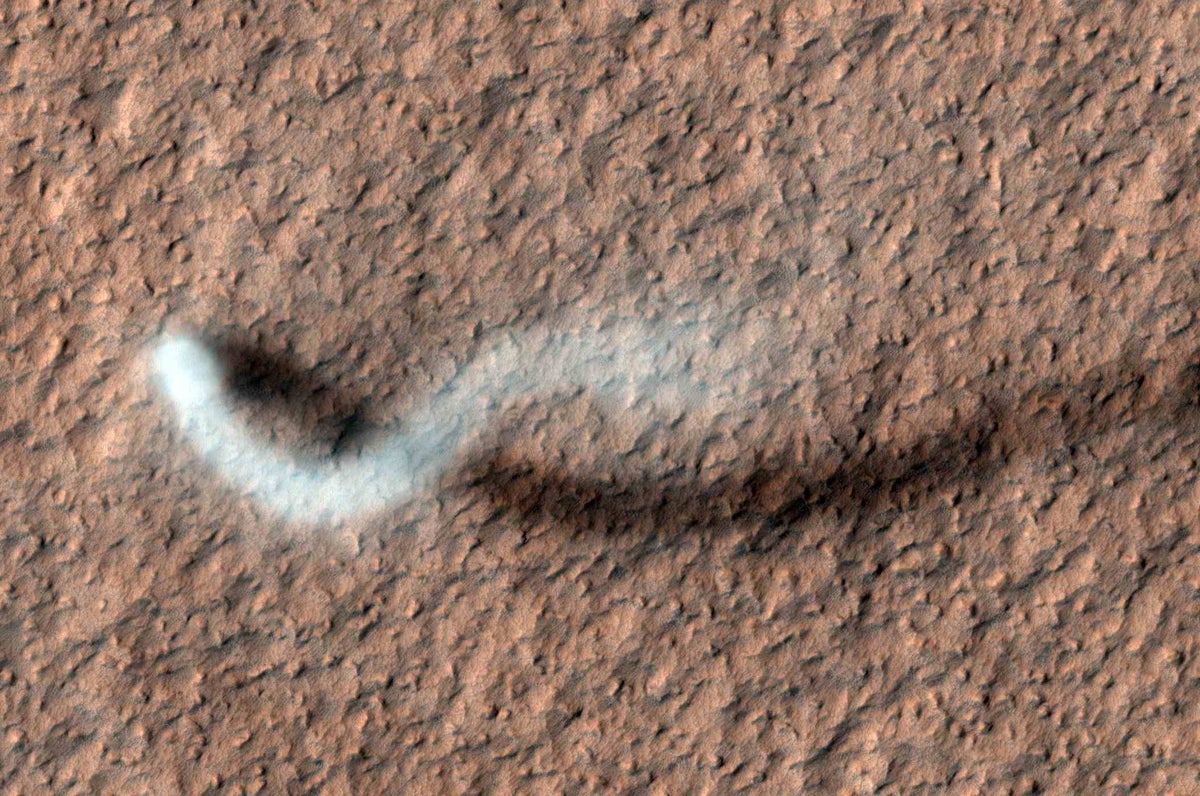Scientists Detect Lightning on Mars for the First Time
NASA's Perseverance rover has captured audio evidence of lightning on Mars, solving a long-standing mystery and offering new insights into the planet's atmospheric electrical activity.
Subscribe to unlock this story
We really don't like cutting you off, but you've reached your monthly limit. At just $5/month, subscriptions are how we keep this project going. Start your free 7-day trial today!
Get StartedHave an account? Sign in
Overview
- Scientists have successfully detected and recorded evidence of lightning on Mars using audio captured by NASA's Perseverance rover, confirming a phenomenon long theorized.
- The rover's microphone picked up crackling sounds, electrical arcs, and audible shockwaves, indicating electrical activity just a few centimeters long within the Martian atmosphere.
- A total of 55 lightning events were observed over two Martian years, primarily associated with dust devils and larger dust storms across the planet's surface.
- This groundbreaking discovery, made after decades of searching, reveals that interactions among dust particles in Mars' atmosphere can generate electrical activity leading to lightning.
- The presence of lightning on Mars has significant implications for understanding its atmosphere, surface chemistry, potential for human exploration, and the preservation of organic materials.
Report issue

Read both sides in 5 minutes each day
Analysis
Center-leaning sources cover this story neutrally. They present the scientific discovery of lightning on Mars in a factual and informative manner, focusing on the research findings, methodology, and implications without employing loaded language or selective emphasis. The reporting prioritizes objective information, ensuring a balanced and straightforward account of the scientific breakthrough.
Articles (5)
Center (3)
FAQ
The Perseverance rover detected lightning on Mars by capturing audio of electrical crackling, arcs, and shockwaves using its onboard microphones, confirming electrical activity in the Martian atmosphere.
Lightning on Mars is caused by electrical interactions among dust particles in the atmosphere, especially within dust devils and larger dust storms, generating electrical activity that leads to mini-lightning strikes.
Scientists observed a total of 55 lightning events over the course of two Martian years, primarily linked to dust devils and dust storms.
The discovery of lightning on Mars has important implications for understanding Martian atmospheric processes, surface chemistry, the preservation of organic materials, and considerations for future human exploration.
Besides lightning, Perseverance's microphones have recorded sounds including dust devils, the flight of the Ingenuity Mars Helicopter, rover wheel movements, Martian wind, and laser impacts on rock targets used to analyze their composition.
History
- This story does not have any previous versions.



